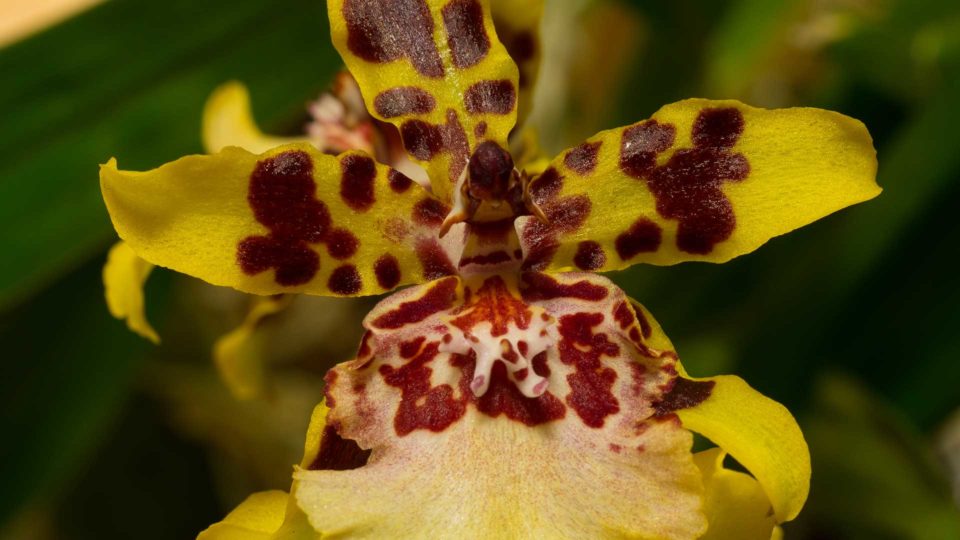Orquideas
Distribution: Orchids probably originated in South Asia, in the Malay region; They are distributed throughout almost all regions of the planet, lacking only in extreme deserts and in permanently frozen lands, the majority currently growing in the American and Asian tropical forests, especially in tropical forests.
Characteristics: Orchids are epiphytic and terrestrial plants, their roots absorb moisture and nutrients from the surrounding environment through a structure called velamen, which are radical hairs replaced by spongy dead cells. The flowers of the orchids are always born in the armpit of a foliaceous or squamiform bract. Basically the flowers are grouped in spikes or clusters, although there are many species that have a single flower.
Importance: They offer shelter to many animals, which live around their roots – especially ants, small snakes, frogs, birds; at the same time other animals that feed on the previous ones like raccoons, pizotes, monkeys, and others. The flowers of half of the species of orchids offer nectar to bees, flies, butterflies, moths and hummingbirds, in exchange for the pollination service offered by these organisms.
These are the species of orchids that inhabit the Lake Yojoa region:
- Brachystele guayanensi
- Brassavola cucullata
- Catasetum maculatum
- Cattleya skinnerii
- Dichaea muricata
- Encyclia bractescens
- Encyclia lívida
- Encyclia ochracea
- Epidendrum boothii
- Epidendrum cochleatum
- Epidendrum difforme
- Epidendrum imatophyllum
- Epidendrum polyanthum
- Epidendrum rigidum
- Habenaria bractescens
- Habenaria distans
- Maxillaria uncata
- Maxillaria variabilis
- Oncidium altissimum
- Oncidium lindenii
- Oncidium sphacelatum
- Pleurothallus matudiana
- Stanhopea cirrhat
- Stanhopea ecornuta
- Stanhopea graveolens
- Distribution: Orchids probably originated in South Asia, in the Malay region; They are distributed throughout almost all regions of the planet, lacking only in extreme deserts […]

